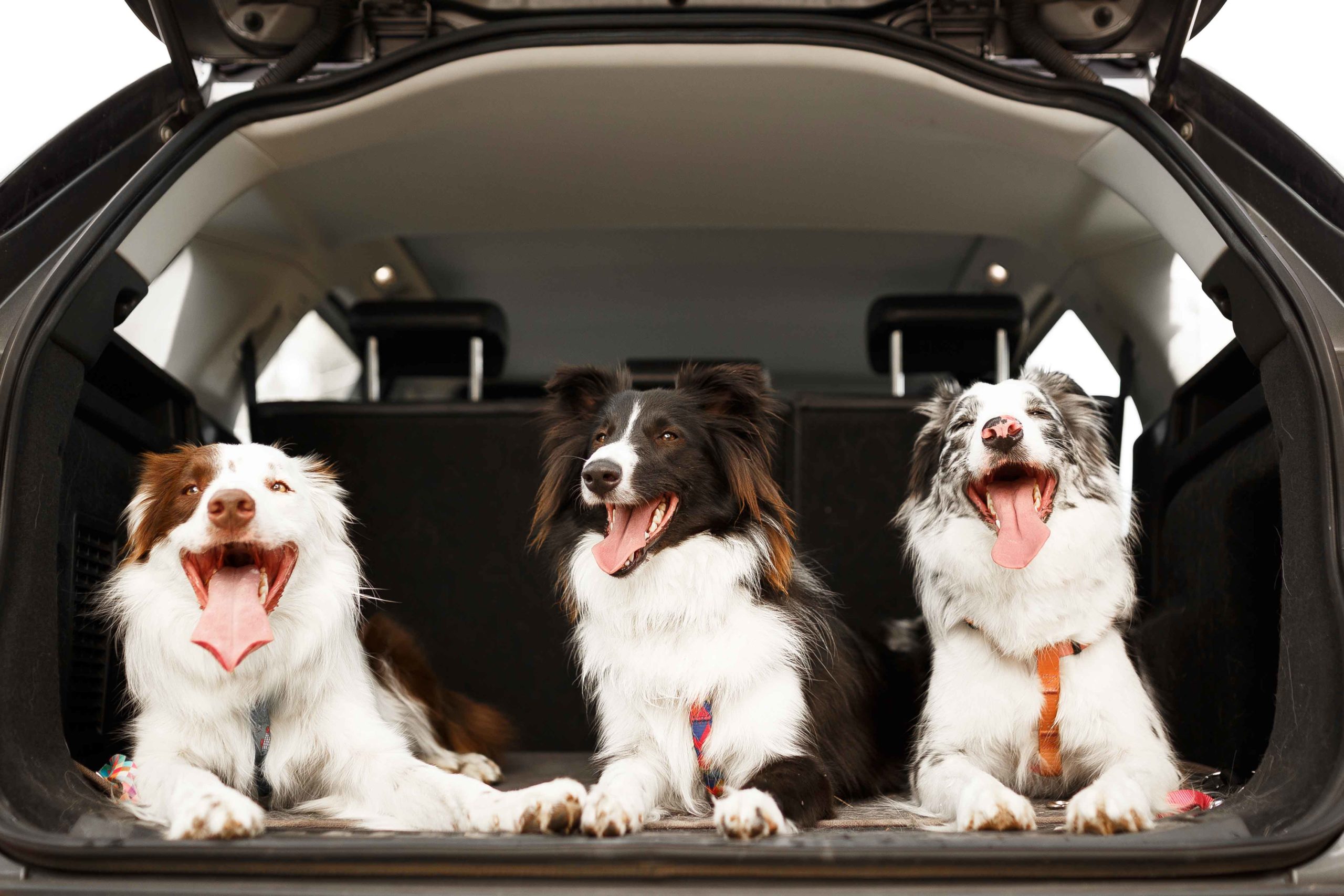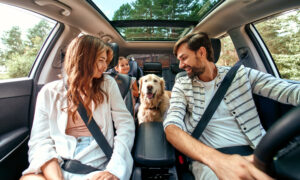Safety and health
- A harness or carrier can help contain your pet so they are not a distraction to the driver, and a harness can also lessen the chance of injury for you and your pet. Start by introducing the harness or carrier at home, with lots of positive reinforcement.
- Young and older dogs may be hesitant to jump in or out of the car. Consider a pet ramp or lifting them in and out of the car if you’re able to.
- Never leave your dog unsupervised in the car on a warm day, even with the windows open.
- Food and water! Having access to clean water and a bowl, no matter the length of the drive, is always a good idea. It is best not to feed your dog before a big drive, but consider taking a portion of food for when you arrive.
- Frequency of toilet breaks depends on your individual dog. Young and older dogs may need more frequent breaks. Consider stopping every couple of hours for a leg stretch and toilet break to avoid any discomfort or accidents in your car. Don’t forget your dog waste bags!
Slowly introducing your dog to the car
- Once your dog is comfortable with your selected safety restraint, try it out in the car first with the engine off, making it a positive experience with treats and praise.
- Start the engine and continue this process without going anywhere.
- Go for a short drive around the block, or shorter if needed, continuing to give treats and praise. You will need another person to drive or be with the dog for this step. If your dog is showing signs of distress, go back a step until they are comfortable to progress again.
- Start slow and gradually increase the length of the drive until your dog is comfortable hopping in and out of the car and is excited to see where the next adventure is!
Motion sickness
- Like humans, pets can experience motion sickness which is generally caused by a physical or psychological response which occurs when there is a disturbance to the inner ear during the movement of travel. This can be more common with younger dogs as the structures in the inner ear aren’t fully developed.
- Some common signs of car motion sickness in dogs include signs of nausea like drooling, panting, restlessness, licking their lips, excessive swallowing, vomiting or diarrhea while the dog is in motion.
- PetSure Veterinary Advisor, Dr Betty Chan, shares tips for pet parents hitting the road with their pup who may suffer from motion sickness.
- Try to avoid feeding for at least two hours before your trip.
- Prop your pet up so they can see outside and in a forward-facing position. This helps stabilise the head and associated balance structures.
- Partially wind down the window so your dog can poke their head out in the fresh air, this can equalise the air pressure and reduce nausea. Just make sure your pet is fully secured in their harness for safety reasons, and ensure they aren’t blocking the reflection of your rear view mirror.
- Give your pup some ginger extract at least 30 minutes before travel as this may have some anti-emetic effects in dogs. Be sure to discuss the dosage of ginger extract with your holistic veterinarian before doing so.
- If your pet continues to show signs of motion sickness, seek advice from your veterinarian who can discuss options with you, which may include training and / or medications.
Helping your dog to enjoy car rides opens up new opportunities for adventures and makes vet visits and everyday life smoother and less stressful. Find what works best for you and your pooch to enjoy the ride! Read more tips on preparing for your trip and etiquette for travelling with pets here.
The author of this article has been updated. Dr Claire Sharp was attributed as the author, and we unreservedly apologise to her and to the author for crediting her as the author of the article.
Pet insurance can help by covering a portion of the eligible vet bill if the unexpected happens. Because it is difficult to predict the costs of veterinary care, it can help to have measures in place to help prepare for the unexpected. Check out our partner network and explore our policy tools to find a pet insurance policy.
Not all conditions or items are covered by Pet Insurance. Refer to the applicable Product Disclosure Statement for information about coverage and exclusions.








